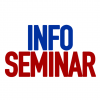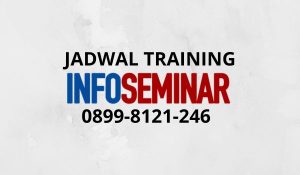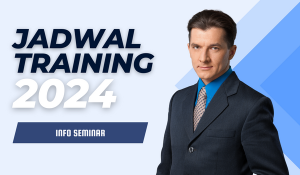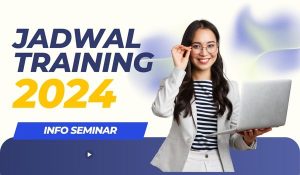DOCUMENT MANAGEMENT SYSTEM
Tanggal dan Tempat
12-13 Mei 2011 | Sensa Hotel – Ciwalk, Bandung | 08:30 – 17:00 WIB
OVERVIEW
With rapidly-changing technology and an increasing emphasis on managing information properly, clients are looking for experts to help them address business-critical issues. Organizations have unique needs that are not often met by consumer products; for example, the search and retrieval functions of common consumer products are not appropriate for organizational purposes. And while you may know that you need assistance figuring out how to help your organization improve efficiency, profitability and productivity, you may not know where to begin.
You shouldn’t have to change the way you work to improve the efficiency of your work process- es. With a quality digital document management solution, you can work the way you always have, just without the clutter and limitations of paper. In fact, according to research conducted by the Gartner Group, when you implement a digital document management solution, your organization can reduce overall document-related costs by 40%.
PURPOSE
How digital document management can help you solve the business-critical problems you face on a daily basis, but also on how to evaluate different document management systems, choose the right solution for your unique needs and implement it quickly and easily. With the right solution—one that fits your organization’s needs and operating style—you cannot only devote your staff’s time to more productive tasks, but also empower them to make better-informed decisions.
OBJECTIVE
The objective of Document Management System is to enable the organization to accomplish its mission(s):
1. Saving money.
2. Saving time.
3. Increasing efficiency.
4. Increasing productivity.
5. Increasing inter-departmental and inter-organizational communication and collaboration.
6. Generating revenue.
7. Enabling automation.
GENERAL OUTLINE
Introduction
1. Using Digital Document Management to Increase Efficiency.
2. A Brief Guide to the Features and Benefits of Digital Document Management Systems.
Section One
Solving Business-Critical Problems with Digital Document Management.
1. Save Time
2. Increase Profitability
3. Increase Productivity and Efficiency
4. Increase Communication and Collaboration
5. Enable Automation
Section Two
1. Document Management Basics
2. Usability
3. Capture
4. Indexing and Retrieval
5. Annotations
6. Storage and Archiving
7. Distribution
8. Workflow
9. Security
10. Integration
11. Technical Considerations
Section Three
1. Conducting a Needs Assessment and Developing an Implementation Plan
2. Analysis
3. Developing an Implementation Plan
4. Compliance and legal issues
5. Healthcare
6. Public sector
Section Four
1. Records Management Specifics
2. Managing digital records
3. Choosing a Records Management Application
Conclusion
Best Practice Samples
- Worksheet One: Document Management System Evaluation Checklist
- Worksheet Two: Needs Assessment
- Worksheet Three: Developing an Implementation Plan
- Worksheet Four: Records Management and Risk Mitigation Toolkit and Self-Evaluation Guide
METHODOLOGY
This training will apply this method:
1. Presentation
2. Discussion
3. Case Study
4. Lecturing
5. Simulation/Practice
WHO SHOULD ATTEND?
This guide provides a common foundation for experienced and inexperienced, technical, and non-technical personnel who support or use the document management for their organization. These personnel include:
- Senior management, the mission owners, who make decisions about the IT budget.
- Chief Information Officers, who ensure the implementation of document management for agency IT systems and the information provided for these IT systems.
- Operational Manager, who is responsible for the final decision on whether to allow operation of an IT system.
- The IT security program manager, who implements the security program Information system security officers (ISSO), who are responsible for IT security IT system owners of system software and/or hardware used to support IT functions.
- Information owners of data stored, processed, and transmitted by the IT systems.
- Business or functional managers, who are responsible for the IT procurement process.
- Technical support personnel (eg., network, system, application, and database administrators; computer specialists; data security analysts), who manage and administer security for the IT systems.
- IT system and application programmers, who develop and maintain code business application.
- IT quality assurance personnel, who test and ensure the quality of the IT systems and data
- IT consultants, who support clients in governance process.
FEE
Rp. 7.500.000,- per peserta
FACILITATOR
Miftah Fauzy, ST.
Miftah had a successful management career in Information Technology. Almost 20 years experience in implementing software development in complex environment such as banking, manufactures, telco and governance/public sectors institutions. 10 years as experiences trainers from University Computer Labs to Profesional Training Providers, conduct training old days procedural programming language such as COBOL, PASCAL, ASSEMBLY, C to modern programming language with OOP such as C++, SmallTalk, Java, .Net.
Qualifications:
· Bachelor Degree – Technology of Informatics
· Diploma – Management of Informatics
· Certified – Project Management Profesional
· Certified – Java 2 Enterprise Edition
Experties:
· SOA (Service Oriented Architecture)
· BPM (Business Process Management)
· ITRM (IT Risk Management)
· COBIT (Control Objective of Information Technology)
· IT-IL V3 (Information Technology Infrastructure Library)
· IT Governance
· IT Planning and Architecture









